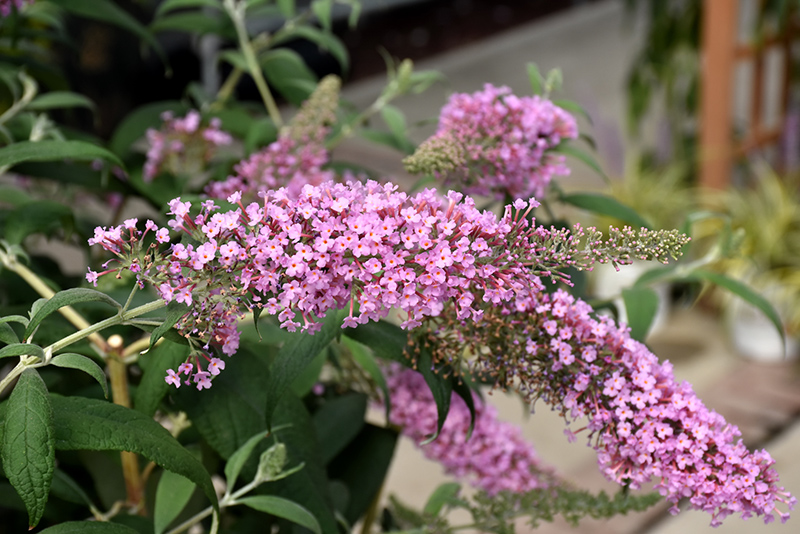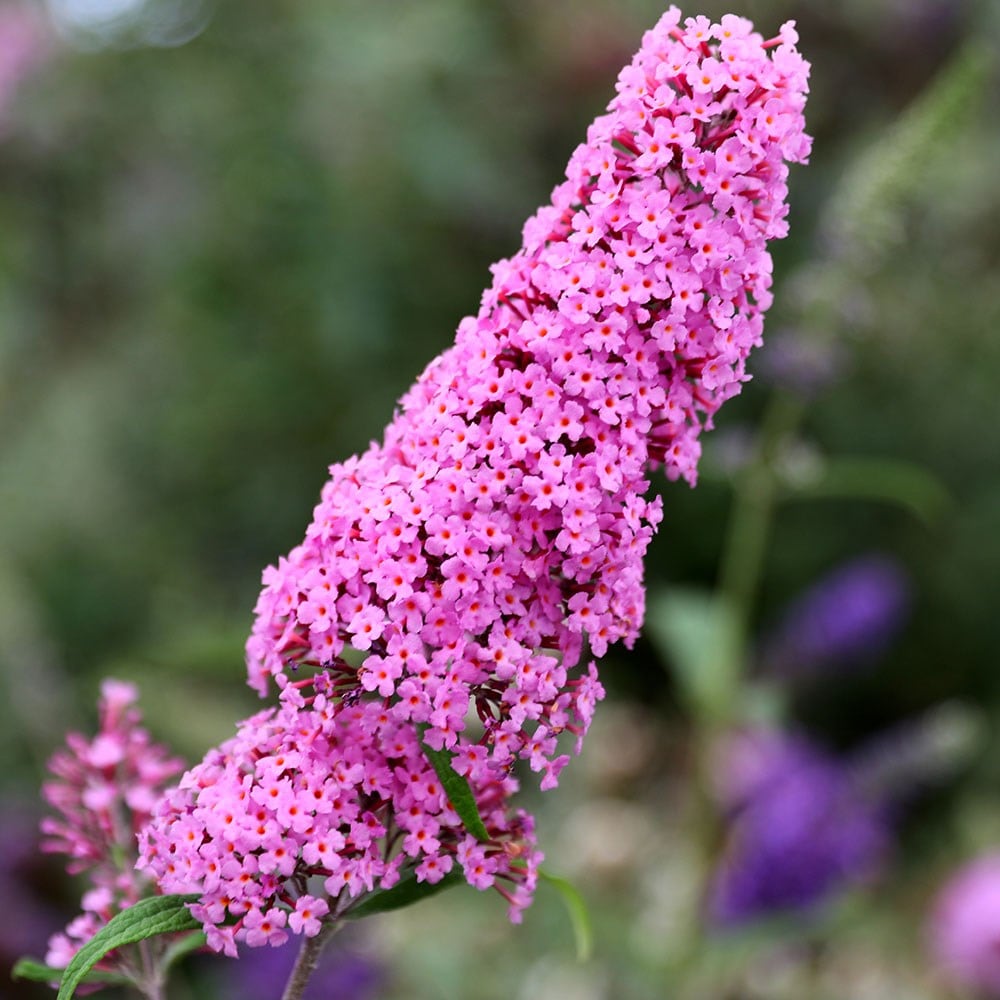How To Grow Care For Pink Delight Butterfly Bush
Pink Delight Butterfly Bush is a beautiful and easy-to-care-for shrub that can add a touch of color and fragrance to any garden. It is known for its long, conical clusters of fragrant, bright pink flowers that attract butterflies and other pollinators. Pink Delight Butterfly Bush is relatively drought tolerant and can thrive in a variety of soil conditions, but it does best in full sun and well-drained soil.
Here are the steps on how to grow and care for Pink Delight Butterfly Bush:
- Choose a location. Pink Delight Butterfly Bush prefers full sun, but it can tolerate partial shade. It is important to choose a location that has well-drained soil. If your soil is heavy clay, you may need to add sand or compost to improve drainage.
- Plant the shrub. Pink Delight Butterfly Bush can be planted in the spring or fall. When planting, dig a hole that is twice as wide and as deep as the root ball of the shrub. Backfill the hole with soil, tamping down gently to remove any air pockets. Water the shrub thoroughly after planting.
- Water the shrub regularly. Pink Delight Butterfly Bush is relatively drought tolerant, but it will need more water during hot, dry weather. Water the shrub deeply once a week, or more often if the weather is hot and dry.
- Fertilize the shrub in the spring. Apply a balanced fertilizer to the shrub in the spring. A slow-release fertilizer is a good option, as it will provide nutrients to the shrub for several months.
- Prune the shrub in the late winter. Pink Delight Butterfly Bush can be pruned to control its size and shape. Prune the shrub in the late winter, after the flowers have faded. Cut back the stems by about one-third to one-half.
With proper care, Pink Delight Butterfly Bush will thrive in your garden for many years.
Here are some additional tips for caring for Pink Delight Butterfly Bush:
- Mulch around the base of the shrub to help retain moisture and suppress weeds.
- Watch for pests and diseases. Pink Delight Butterfly Bush is susceptible to a few pests and diseases, such as aphids, spider mites, and powdery mildew. If you see any problems, treat them promptly with an appropriate pesticide or fungicide.
- Deadhead spent flowers. Deadheading will encourage the shrub to bloom more profusely.
- Protect the shrub from winter cold. If you live in a cold climate, you may need to protect the shrub from winter cold by covering it with burlap or evergreen boughs.
With a little care and attention, you can enjoy the beautiful blooms of Pink Delight Butterfly Bush for many years to come.
If you are interested in learning more about the pink delight butterfly bush, I recommend visiting Home Gardening. This website has a wealth of information about the plant, including its size, growth habits, care requirements, and more. You can also find photos of the plant in bloom, as well as tips on how to attract butterflies to your garden.
FAQ of pink delight butterfly bush
What is Pink Delight butterfly bush?
Pink Delight butterfly bush is a fast-growing, hardy shrub that produces abundant clusters of fragrant, pink flowers from July to September. It is a popular choice for butterfly gardens, as it attracts a wide variety of butterflies and other pollinators.
Where does Pink Delight butterfly bush grow best?
Pink Delight butterfly bush prefers full sun and well-drained soil. It can tolerate some light shade, but will not flower as well in shady conditions. It is hardy in USDA zones 5-9.
How much water does Pink Delight butterfly bush need?
Pink Delight butterfly bush is relatively drought tolerant, but it will benefit from regular watering during the hot summer months. Water deeply once a week, or more often if the weather is hot and dry.
How to prune Pink Delight butterfly bush?
Pink Delight butterfly bush should be pruned in late winter or early spring. To do this, cut back the previous year's growth to about 3-4 buds. This will encourage new growth and flowering.
What are some common pests and diseases of Pink Delight butterfly bush?
Pink Delight butterfly bush is generally resistant to pests and diseases. However, it can be susceptible to aphids, spider mites, and powdery mildew. If you notice any of these pests or diseases, treat them promptly with an appropriate pesticide or fungicide.
How to propagate Pink Delight butterfly bush?
Pink Delight butterfly bush can be propagated by cuttings or division. To propagate by cuttings, take 4-6 inch cuttings from healthy, non-flowering stems in the spring or early summer. Root the cuttings in a well-draining potting mix. To propagate by division, dig up a mature plant in the spring or fall and divide it into two or more sections. Plant the divisions in well-draining soil in a sunny location.
Image of pink delight butterfly bush
10 different images of pink delight butterfly bush that are free to use:
- A close-up of a single pink delight butterfly bush flower. The flower is a deep pink color with a white center. It is surrounded by a cluster of small, green leaves.

- A full-size pink delight butterfly bush plant in full bloom. The plant is covered in pink flowers that range in color from light pink to deep pink. The flowers are arranged in clusters along the branches of the plant.
- A pink delight butterfly bush plant in a garden setting. The plant is surrounded by other flowers, including purple coneflowers, yellow sunflowers, and white daisies. The butterfly bush is the tallest plant in the garden, and its pink flowers stand out against the other flowers.

- A butterfly landing on a pink delight butterfly bush flower. The butterfly is a monarch butterfly, and it is brightly colored in orange and black. The butterfly is feeding on the nectar of the pink delight flower.

- A group of butterflies feeding on the flowers of a pink delight butterfly bush. There are several different types of butterflies in the group, including monarch butterflies, swallowtail butterflies, and cabbage butterflies. The butterflies are all feeding on the nectar of the pink delight flowers.

- A pink delight butterfly bush plant in the fall. The leaves of the plant have turned yellow and orange, and the flowers have faded. The plant is still attractive in the fall, and it can provide food for late-season butterflies.
- A pink delight butterfly bush plant in the winter. The leaves of the plant have fallen off, and the branches are bare. The plant is dormant in the winter, but it will start to grow again in the spring.
- A close-up of the bark of a pink delight butterfly bush plant. The bark is smooth and grayish-brown. There are several small, raised bumps on the bark.

- A close-up of the roots of a pink delight butterfly bush plant. The roots are thick and brown. They are covered in small, white hairs.

- A pink delight butterfly bush plant in a pot. The plant is about 3 feet tall and has several flower buds. The plant is in a pot that is about 12 inches in diameter.

Post a Comment for "How To Grow Care For Pink Delight Butterfly Bush"